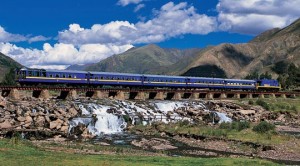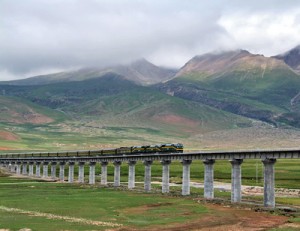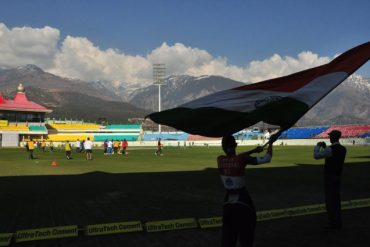The Shimla Kalka rail line, once considered an engineering marvel, today stands in a dismal condition.
Yes, it has won a position in the list of UNESCO World Heritage Sites, but this newly acquired status has only frozen the track in a time capsule.

A simple look at other mountain railway systems around the world reveals the stark disparity we have lead ourselves into.
The most stunning advancement is this respect have been made by the Chinese engineers, who have constructed railway tracks through one of the highest regions in the world, Tibet.

The Qinghai-Tibet Train to Lhasa runs at an average speed of 100 Km/hr and covers 550 km of permafrost track on its way, treading across the highest railway station at an elevation of over 5000 meters above sea level.
Before China, it was Peru, which not only operates passenger trains, but deploys numerous freight trains that carry metals and ores across mountains and passes.
Even the Swiss trains, which are quiet similar to the Mountain trains run in India, are rapidly switching to advancements.
But, when it comes to the Shimla-Kalka rail line, it reflects how overly satisfied we are with what exists that we forget to explore newer possibilities.
The status of being a World Heritage Site seems to only add to the already existing lethargy.
Over the years, continuous failure on the part of Railway Authorities to upgrade the engineered marvel has further resulted in declining traffic.
The commercial viability of the track has never been explored much; even the possibility of introducing freight carriage is nowhere on the cards.
While other countries around the world are generating revenues from freight and utilizing it for further advancements, India lacks the motivation and push to insinuate the process of change.

It was for strategic needs that British connected Shimla with a rail track at great costs.
Prior to railways penetrating the tough Himalayan lands, the only means to cover the distance was using jumpans.
The Kalka-Shimla train brought glory to the flourishing British Summer Capital and with it came improved connectivity and accessibility.
But, taking a closer look at the current scenario, we observe that the journey through the steep mountains, aboard a train that travels at speeds of 35 km an hour (average), only attracts the wandering idealists, with time a plenty to devote to Mother Nature.
While we’d all like to squander our time like that, but today even a holiday means economizing on every minute we can.
Adding to the woes of the railways, improvements on the highway connecting Chandigarh and Shimla, have further alienated a larger number of travelers from taking the train journey.
In comparison, road travel has become far more convenient, comfortable.
All frequent travelers, whether coming to town for business or leisure, prefer taking the road on wheels.
A 3 hours journey brings you from Shimla to Chandigarh. For every verdant adventurer, it offers all the excitement- speed, panoramic views, and some attractive stops, where you could break your journey to admire the majestic mountain ranges overlooking the highway.
Sadly, in comparison, for all the charm that the toy train offers, it takes over 6 hours to cover a distance of 96 km. Sometimes during the rains and the winters, this time gets further extended to 7 or 8 hours.
The Kalka Shimla rail line was celebrated as a triumph of science and engineering in overcoming the challenges of conquering the mighty Himalayas.
On its way up from the plains at Kalka to the heights of Shimla, the train delves through a total of 102 tunnels, crosses over 864 bridges, and humbly trails through the steep curves with angles as sharp as 48 degree.
The bridges in particular were considered to have used state of the art technology.
Many of them are viaducts, with arched galleries, and staunch reminders of Roman aqueducts.
Achieving these feats one hundred years ago was quiet unimaginable by most, and this land the vintage train on the UNESCO list of World heritage Sites.
Though the Shimla-Kalka rail network, and for that matter all trains on the Mountain Railway networks, be it Nilgiri, Darjeeling or Kangra, they may have world class allure, but they lack the requisite innovation.
The average yearly maintenance expenditure on the Shimla-Kalka line alone costs around Rs. 30 crore, whereas the earning made out is only about Rs. 12 crore.
Besides the 102 old tunnels and 864 bridges have to be regularly inspected given their age and conditions.
Even if venturing into freight and super express trains seems a far fetched dream, but upgrading it to a profitable venture could be possible.
With thousands of tourists flocking the hill state during the year, there shouldn’t be a problem converting them into business that might open newer possibilities for expansion.



But who will bell the cat for Himachal. We have only 4 MPs in parliament against many of other states. Railway seems not interested rather may find excuse to pack.